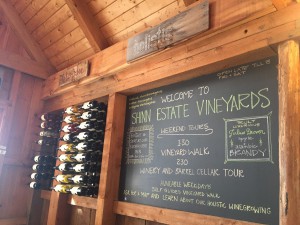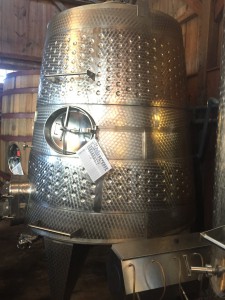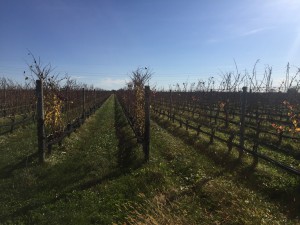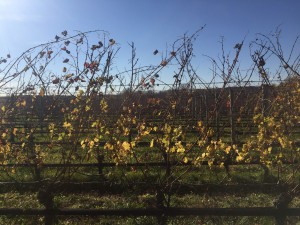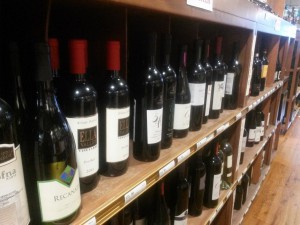I decided to go to the Shinn Estate Vineyards located in Mattituck, New York for my winery visit assignment because it was conveniently one of the many wineries that was in a closer proximity to my residence. Originally, I was going to take public transportation to get there but it would’ve been too expensive so my mother volunteered to drive me instead. I opted to do a winery tour but could not partake in the wine tasting as I am not of drinking age yet. The winery provided me with a great learning experience yet neither Barbara nor David, the owners of the vineyard was present when I visited which ultimately ruined my time spent at the vineyard. The tour guide that I had was not very patient with me and when I asked him questions about the vineyards such as the grapes grown or the history of the vineyard, he nonchalantly told me that he did not have much knowledge about the vineyard at all. He simply instructed me to use the website to receive the information that I needed. So I continue to walk around the vineyard but was, unfortunately, finished with the tour in about a half hour yet I was still uninformed about the vineyard.
I later called the vineyard and told them about my uneventful visit and I had finally gotten my question answered over the phone. I forgot to get the woman’s name but she informed me that when the Shinn Estate Vineyards opened, it was the first farm winery to open in Long Island and one of the first to use alternative energy whether solar or wind powered. She described to me that the vineyards houses many grape varieties, the grapes grown are Chardonnay, Petit Verdot, Cabernet Franc, Merlot, Cabernet Sauvignon, Pinot Blanc, Riesling, and Malbec. The grapes even naturally have yeast in them that directly help in the production of wine by rapidly improving the fermentation process. She widely talked about the vintage wines that are available despite its specifications; they still have vibrant, fruitful undertones. The vineyard uses reclaimed ancient heartwood pine to age the wine diligently in the cellar. She further explained that the vineyard struggled over the past summer as it was extremely dry for the soil which lead them to irrigate which they usually do not readily do to nourish the vines. She also informed that about the American Viticultural Area (AVA) which was the “North Fork of Long Island and how it must be placed on the label of the bottle, I explained to her how we studied this in our wine class and she was thoroughly intrigued by the methods used in the class.
Honestly, this trip surprised me as I couldn’t believe how much I understood the wine terminology that was being used. If I had taken this trip just this past summer, I would’ve been so confused by the beautiful process of wine production. I love that I understand this much information about wine despite not being of drinking age yet. I hope that many other people learn about wine production as it is very interesting and it makes for drinking wine, beer, or spirits to be a better experience as you have a greater understanding of the lengthy process that was endured before it made it into the glass in front of you.
References:
Kolpan, S. (n.d.). Exploring Wine (3rd ed.). Wiley.
Shinn estate vineyard and farmhouse. (2015, November 29). shinn estate vineyard and farmhouse. Retrieved November 29, 2015, from shinn estate vineyard and farmhouse: http://shinnestatevineyards.com

